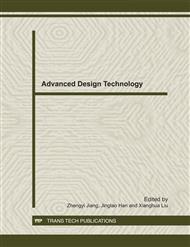p.369
p.373
p.377
p.381
p.388
p.392
p.397
p.402
p.406
The Effect of Flexion Angle and Sagittal Radius on Femorotibial Contact Stresses
Abstract:
The artificial knee joint need to satisfy and meet certain design requirements in addition to being biocompatible. These being the design of the flexion angle and sagittal radius of the prosthetic knee for specific activities such as walking and exercising. Day to day physical activities do result in generating frequent contacts between the femur and tibia leading to stresses at the interface of the femorotibial joint. These stresses on exceeding certain limit do result in damage of the tibia which acts as bearing surface carrying loads during each of the knee activity. Hence, prediction and minimization of the stresses at the knee interfaces is the key issue to ensure high performance knee joints. In the light of the above, the stresses at the knee interfaces are computed using commercially available FEA software (ANSYS 10). The three dimensional model was developed using PRO E software for sagittal radius of 40, 50 and 60 mm. The flexion angles considered are 0, 20 and 40 degrees. A load of 500N was considered. It is observed that the stress intensity increases with increase in flexion angle and sagittal radius for all the material combinations of the prosthetic knee joint. Further, alumina ceramic femur and polyethylene chopped carbon fiber composite tibia exhibits the least stress levels at all the studied sagittal radius and flexion angles.
Info:
Periodical:
Pages:
388-391
Citation:
Online since:
December 2011
Authors:
Keywords:
Price:
Сopyright:
© 2012 Trans Tech Publications Ltd. All Rights Reserved
Share:
Citation:


